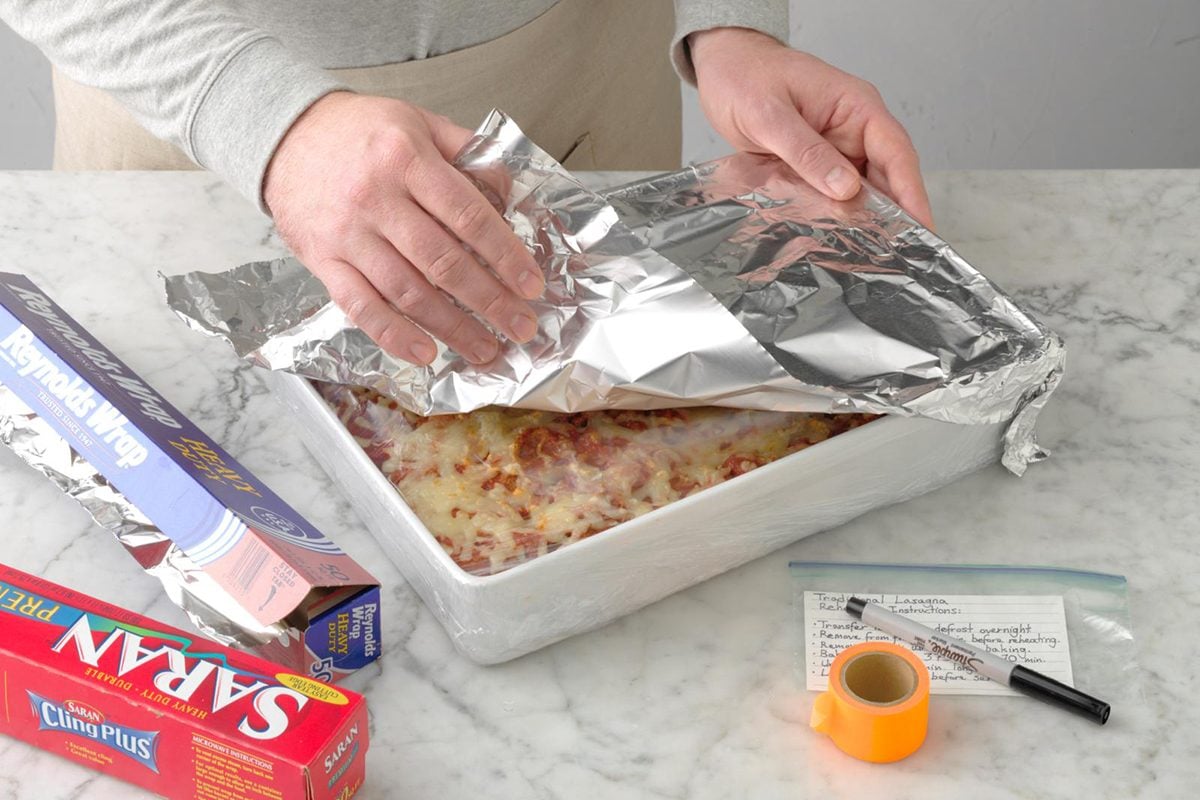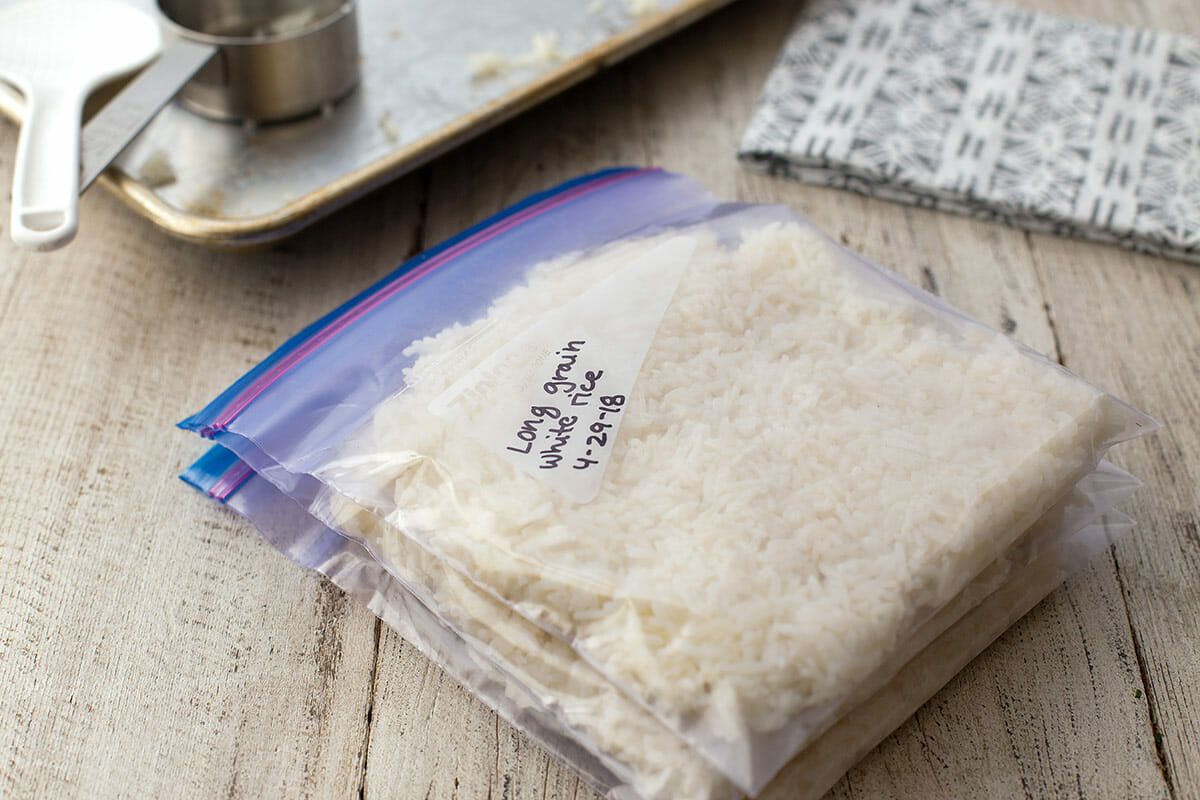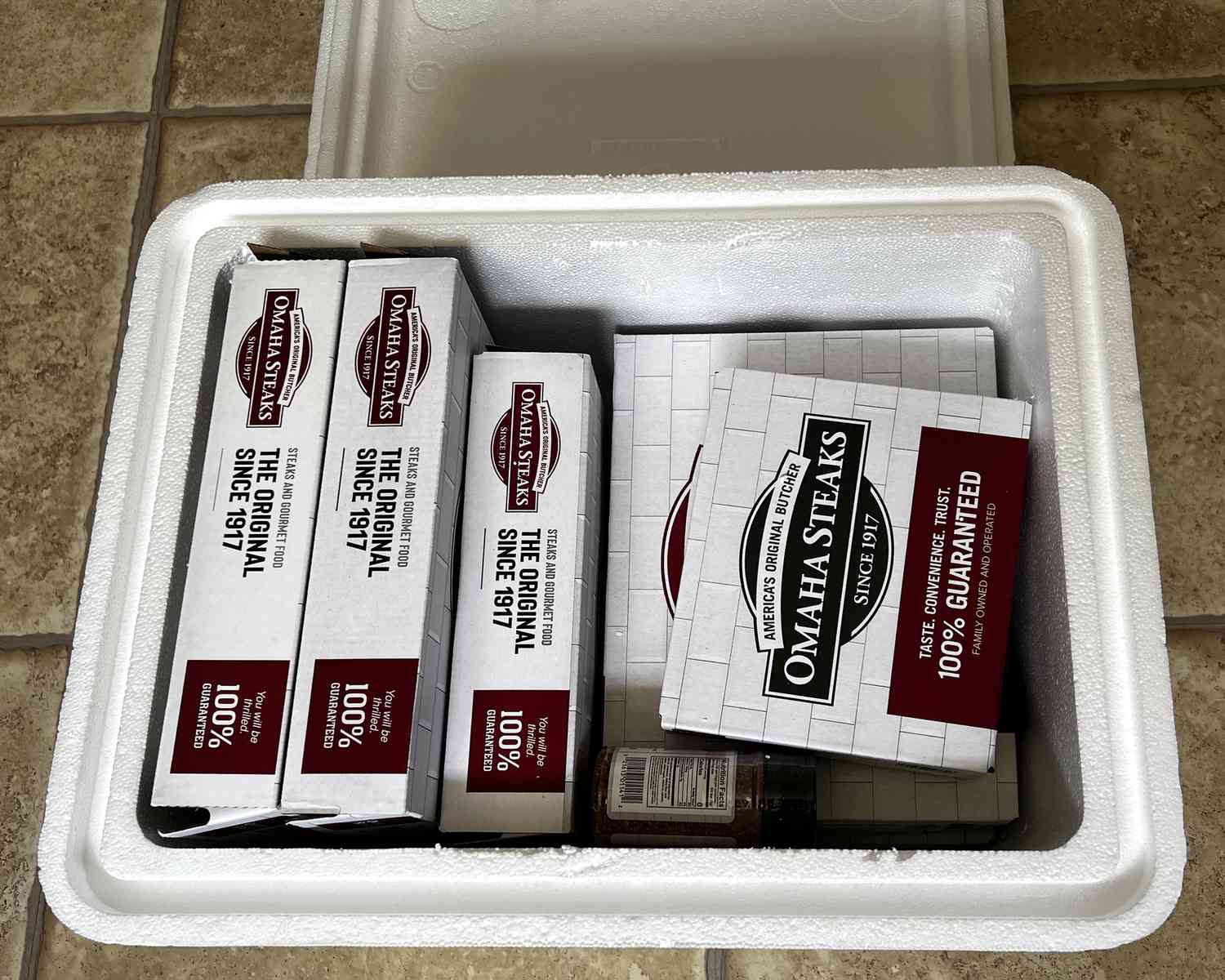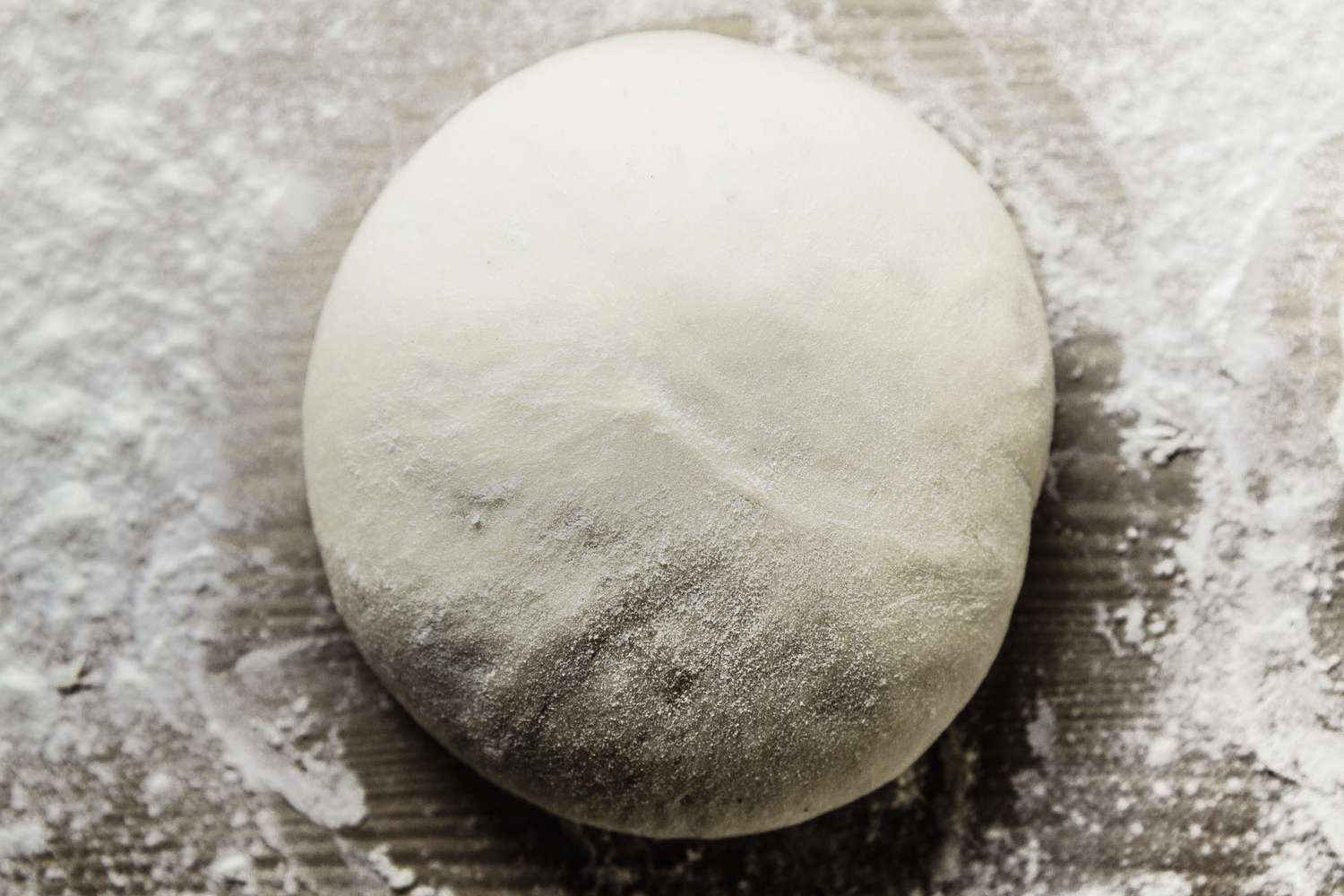

Articles
How Long Does Lasagna Last In The Freezer
Modified: January 6, 2024
Discover how long articles on how long lasagna lasts in the freezer is, and learn the best tips for freezing and thawing lasagna to maintain its flavor and quality.
(Many of the links in this article redirect to a specific reviewed product. Your purchase of these products through affiliate links helps to generate commission for Storables.com, at no extra cost. Learn more)
Introduction
Welcome to the world of lasagna – the ultimate comfort food that brings together layers of pasta, savory meat sauce, and gooey cheese. Whether you are a master chef or a novice in the kitchen, lasagna is a dish loved by many. But what happens when you have leftovers or you want to prepare a batch of lasagna in advance? That’s where the freezer comes in to save the day! In this article, we will explore the world of frozen lasagna and answer the question – how long does lasagna last in the freezer?
Freezing lasagna is a convenient way to extend its shelf life and have a delicious meal ready in a pinch. However, it’s important to understand the factors that affect the longevity of frozen lasagna and the proper storage techniques to ensure its quality and taste.
From the type of ingredients used to the packaging and storage conditions, various factors play a role in determining how long lasagna can last in the freezer. By understanding these factors, you can make informed decisions and enjoy a tasty lasagna whenever the craving strikes.
So, grab a fork and let’s delve into the world of frozen lasagna and discover everything you need to know to keep your favorite pasta dish fresh and tasty for months to come.
Key Takeaways:
- Proper storage and quality ingredients are key to preserving frozen lasagna. Follow storage guidelines and thawing methods to enjoy delicious homemade lasagna even after months in the freezer.
- Be vigilant for signs of spoiled frozen lasagna and discard if necessary. Understand the factors affecting frozen lasagna’s shelf life to ensure safe and tasty consumption.
Read more: How Long Does Freezer Jam Last
Factors that Affect Lasagna Shelf Life in the Freezer
When it comes to freezing lasagna, there are several key factors that can impact its shelf life. Understanding these factors will help you determine how long your lasagna will stay fresh and flavorful in the freezer.
- Ingredients: The quality of ingredients used in your lasagna can affect its freezer life. Fresh and high-quality ingredients are more likely to retain their taste and texture after being frozen. If you’re using ingredients that are nearing their expiration date, your lasagna may not last as long in the freezer.
- Packaging: Proper packaging is crucial to maintain the quality of frozen lasagna. Use airtight containers or freezer bags to prevent moisture and air from reaching the lasagna, which can cause freezer burn and affect the taste and texture. Ensure that the packaging is tightly sealed to keep out any unwanted odors or flavors.
- Storage Temperature: The temperature of your freezer plays a significant role in determining the shelf life of lasagna. It is recommended to set your freezer temperature at or below 0°F (-18°C) to ensure optimal food preservation. Fluctuating temperatures can lead to the growth of bacteria and spoilage.
- Freezer Duration: The length of time lasagna spends in the freezer can affect its quality. As a general rule, most lasagna can be safely stored in the freezer for up to three months. However, for best results, it’s recommended to consume frozen lasagna within one to two months to ensure the best taste and texture.
- Layer Thickness: The thickness of the lasagna layers can affect freezing and thawing times. Thicker layers may take longer to freeze and thaw evenly. Consider dividing your lasagna into individual portions to expedite the thawing process and allow for more flexibility in portion size.
By taking these factors into account and implementing proper storage techniques, you can maximize the shelf life of your frozen lasagna and enjoy delicious home-cooked meals whenever you desire.
Proper Storage of Lasagna in the Freezer
Proper storage of lasagna in the freezer is essential to maintain its taste, texture, and overall quality. Follow these guidelines to ensure your frozen lasagna stays fresh and delicious:
- Cool it down: Allow your freshly cooked lasagna to cool down completely before placing it in the freezer. This helps prevent condensation and ice crystals from forming, which can compromise the texture of the dish.
- Divide into portions: Consider dividing your lasagna into individual serving-sized portions before freezing. This way, you can easily thaw and reheat smaller portions as needed, reducing waste.
- Package it properly: Use airtight containers or freezer bags to store your lasagna. Make sure to remove any excess air from the packaging to prevent freezer burn. Label the containers with the date of freezing for easy reference later on.
- Stacking and arrangement: If you’re freezing multiple portions or trays of lasagna, stack them carefully in the freezer to ensure they freeze evenly and are easily accessible. Avoid placing excessively heavy items on top of the lasagna, as this can result in deformation and loss of quality.
- Fresh ingredients: Using fresh ingredients in your lasagna will help maintain its flavor and quality in the freezer. If possible, use ingredients that are at their peak freshness to ensure the best results.
- Freezing method: Flash-freezing is an effective technique for freezing lasagna. Place the cooked lasagna on a baking sheet and put it in the freezer for a couple of hours. Once partially frozen, transfer the lasagna to the airtight containers or freezer bags for long-term storage.
- Organize your freezer: Arrange your frozen lasagna and any other items in your freezer in an organized manner. This helps in easy retrieval and ensures that the lasagna is not crushed or damaged during the process.
By following these storage tips, you can maintain the quality and taste of your lasagna in the freezer for an extended period, allowing you to enjoy a delicious meal whenever the craving strikes.
How to Thaw Frozen Lasagna
Thawing frozen lasagna properly is crucial to preserve its texture and flavors. Here are a few methods you can use to thaw your frozen lasagna:
- Refrigerator Method: This is the safest and most recommended method for thawing frozen lasagna. Simply transfer the lasagna from the freezer to the refrigerator and allow it to thaw overnight. Depending on the size and thickness, it may take anywhere from 12 to 24 hours for the lasagna to fully thaw. Once thawed, you can reheat it in the oven or microwave.
- Cold Water Bath Method: If you’re pressed for time and need to thaw the lasagna quickly, you can use the cold water bath method. Place the frozen lasagna in airtight packaging or a sealed plastic bag and submerge it in a basin or sink filled with cold water. Change the water every 30 minutes to maintain the desired temperature. It usually takes about two to three hours to fully thaw the lasagna using this method. Once thawed, cook or reheat the lasagna immediately.
- Microwave Method: While not the ideal method for thawing lasagna, you can use the microwave if you’re short on time. Use the defrost setting or set the microwave to 50% power and thaw the lasagna in short intervals, stopping and stirring frequently to ensure even thawing. Remember to transfer the lasagna to a suitable container or cooking dish and cook it immediately after thawing.
Regardless of the method you choose, it’s important to avoid leaving the lasagna at room temperature for an extended period, as this increases the risk of bacterial growth and foodborne illnesses.
Once the lasagna is fully thawed, ensure it reaches a safe internal temperature of 165°F (74°C) before consuming. This not only ensures it is heated thoroughly but also helps preserve its taste and texture.
Now that you know the different methods to thaw frozen lasagna, you can confidently choose the most suitable option based on your time constraints and preferences.
Lasagna can last in the freezer for up to 3 months if properly stored in an airtight container or freezer bag. Be sure to label with the date for easy reference.
Signs of Spoiled Frozen Lasagna
While freezing lasagna can extend its shelf life, it is important to be aware of the signs of spoiled frozen lasagna. Here are some indicators that your lasagna may have gone bad:
- Unpleasant odor: If your frozen lasagna emits a strong, foul smell when thawed or heated, it is a clear sign that it has spoiled. Trust your sense of smell and discard the lasagna immediately.
- Changes in texture: Frozen lasagna that has gone bad may have a slimy or mushy texture. If the pasta appears overly soft and the layers are no longer distinct, it is best to err on the side of caution and avoid consuming it.
- Visible signs of mold: Mold growth is a clear indication of spoilage. If you notice any black, green, or white mold on the surface of your frozen lasagna, do not consume it. Mold can release toxins and cause foodborne illnesses.
- Off flavors: If the taste of your frozen lasagna is noticeably different from what you expect or if it tastes rancid or sour, it is likely spoiled. Trust your taste buds and discard the lasagna to avoid any potential foodborne illnesses.
- Freezer burn: Freezer burn can occur when the lasagna is not properly wrapped or sealed, causing its texture and flavor to deteriorate. If you notice any dry, discolored patches on the surface of the lasagna, it may have freezer burn. While not necessarily unsafe to eat, freezer-burned lasagna may have a subpar taste and texture.
It is crucial to remember that if you are unsure about the quality or safety of your frozen lasagna, it is best to err on the side of caution and discard it. Consuming spoiled food can lead to foodborne illnesses, so it’s better to be safe than sorry.
By being vigilant and aware of these signs of spoilage, you can ensure that you enjoy safe and delicious frozen lasagna every time you decide to indulge in this beloved dish.
Read more: How Long Does Yogurt Last In The Freezer
Frequently Asked Questions (FAQs)
Here are some common questions regarding frozen lasagna:
- 1. Can you freeze homemade lasagna?
- 2. How long can you keep lasagna in the freezer?
- 3. Can you freeze lasagna with meat and sauce?
- 4. Can you freeze lasagna in single portions?
- 5. Can you freeze lasagna in aluminum foil pans?
- 6. Can you freeze lasagna in a glass dish?
- 7. How can you safely thaw lasagna?
- 8. Can you refreeze lasagna?
Yes, homemade lasagna can be frozen. It is important to let the lasagna cool completely before freezing it to maintain its quality.
Lasagna can typically be stored in the freezer for up to three months. However, for the best taste and texture, it is recommended to consume it within one to two months.
Yes, you can freeze lasagna with meat and sauce. Cooked meat and sauce freeze well and will maintain their flavors when properly stored.
Absolutely! Freezing lasagna in single portions allows for convenient thawing and reduces waste. Simply divide the lasagna into individual servings before freezing.
Yes, aluminum foil pans are suitable for freezing lasagna. Make sure the pan is securely covered with aluminum foil or placed in an airtight container or freezer bag to prevent freezer burn.
Freezing lasagna in a glass dish is possible, but it is important to ensure that the dish is freezer-safe. Avoid sudden temperature changes that could cause the dish to crack or shatter by allowing the lasagna to cool before freezing.
The safest method to thaw lasagna is by placing it in the refrigerator overnight. Alternatively, you can use the cold water bath method or the microwave for quicker thawing. Ensure the lasagna reaches a safe internal temperature before consuming.
It is generally not recommended to refreeze lasagna once it has been thawed. Freezing and thawing can affect the texture and quality of the dish, and refreezing may further compromise its taste and safety.
These are just a few common questions regarding frozen lasagna. If you have any additional inquiries, consult a food safety resource or trusted recipe source for more information.
Conclusion
Freezing lasagna is a great way to extend its shelf life and have a delicious meal ready at a moment’s notice. By understanding the factors that affect the longevity of frozen lasagna and implementing proper storage techniques, you can ensure its quality and taste are preserved even after months in the freezer.
Factors such as the quality of ingredients, proper packaging, storage temperature, and duration in the freezer all play a role in determining the lifespan of frozen lasagna. By using fresh ingredients, airtight containers or freezer bags, and maintaining a consistent and low temperature in your freezer, you can maximize the shelf life of your lasagna.
Thawing frozen lasagna safely is just as important. Whether you choose to thaw it in the refrigerator, by using a cold water bath, or in the microwave, it’s essential to follow proper thawing methods to maintain the taste and texture of the dish.
Always be vigilant for signs of spoiled frozen lasagna, such as unpleasant odor, changes in texture, visible mold, off flavors, or freezer burn. If you notice any of these signs, it is best to discard the lasagna to avoid any potential foodborne illnesses.
By following these guidelines and understanding the do’s and don’ts of freezing lasagna, you can enjoy delicious homemade lasagna that tastes as good as freshly made, even when stored in the freezer.
So go ahead, stock up on ingredients, prepare a big batch of lasagna, and freeze it for future enjoyment. Whether you’re hosting a dinner party or simply craving a comforting meal, your frozen lasagna will be there to satisfy your appetite.
Frequently Asked Questions about How Long Does Lasagna Last In The Freezer
Was this page helpful?
At Storables.com, we guarantee accurate and reliable information. Our content, validated by Expert Board Contributors, is crafted following stringent Editorial Policies. We're committed to providing you with well-researched, expert-backed insights for all your informational needs.















0 thoughts on “How Long Does Lasagna Last In The Freezer”